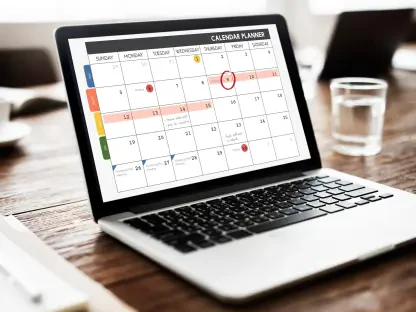In the digital age, having an outstanding product is only half the battle. The other half involves making sure that your potential customers know it exists and are excited about it. As ecommerce sales are projected to surpass $6.3 trillion in 2024, it’s increasingly important to adopt strategies that elevate your brand’s online presence and drive sales.
One efficient way to gain visibility is through Digital PR. A robust digital PR strategy can transform your business by creating brand awareness, driving traffic to your website, and ultimately boosting your sales. This article provides a step-by-step guide to help you develop and execute an effective digital PR campaign.
1. Define your success metrics
To create a successful digital PR campaign, it’s imperative to start by defining what success looks like for your brand. Key performance indicators (KPIs) offer benchmarks to measure the effectiveness of your strategy. These KPIs might include increased web traffic, a specific number of high-quality backlinks, heightened social media engagement, or greater sales conversion rates. By outlining these metrics at the beginning, you provide your team with clear goals and a way to measure progress.
Understand that not all KPIs are created equal. Web traffic and social media followers, while essential, might not directly correlate with increased sales or conversions. Therefore, it’s crucial to have a nuanced approach to your KPIs. For example, while tracking web traffic is essential, the quality of that traffic is equally important. Are visitors spending time engaging with your content, or are they bouncing off immediately? Similarly, while social media engagement metrics such as likes, comments, and shares are signs of brand visibility, you should also track how these interactions translate into actual sales and leads.
2. Determine your ideal audience
Understanding your target audience is a cornerstone of an effective digital PR strategy. The better you know who your potential customers are, the more tailored and relevant your content and outreach efforts will be. Start by creating detailed buyer personas. These personas should encompass demographic details, purchasing behaviors, preferences, and pain points of your target customers.
Next, explore where your audience consumes content. Are they active on social media platforms like Instagram, TikTok, or LinkedIn? Do they frequent industry blogs or online forums? Understanding where your audience spends their time online will help you focus your digital PR efforts in the right places. For instance, targeting business professionals might involve creating content for LinkedIn and industry-specific blogs, while a younger demographic might be more reachable through Instagram influencers and TikTok content.
Once you have a comprehensive understanding of your audience, tailor your messaging to resonate with them. Speak directly to their needs, desires, and challenges. Personalized and relatable content stands a much higher chance of engaging your audience than generic messages.
3. Build connections
Building a strong network of bloggers, journalists, influencers, and media outlets is essential for any digital PR campaign. This network will help you amplify your brand message and achieve broader reach. Establishing these relationships takes time and effort but is incredibly rewarding in the long run.
Begin by identifying key influencers and media contacts within your industry. Use tools like LinkedIn, Instagram, or specialized PR software to find potential partners who have a significant following and align with your brand values. Once you’ve identified them, take the time to study their work and understand what they care about. This will help you tailor your outreach efforts more effectively.
When reaching out, be genuine and provide value. Offer exclusive content, insights, or products that their audience would find valuable. Over time, these relationships can result in more organic and authentic brand mentions that carry more weight with your target audience. Remember, building a network is not a one-time activity but an ongoing process that requires nurturing and constant engagement.
4. Utilize existing materials
Before diving into creating new content, take stock of what you already have. Repurposing existing content can save time and resources while still effectively reaching your target audience. Look through your current inventory of blog posts, videos, infographics, and press releases to identify materials that can be leveraged for your digital PR efforts.
For example, if you have a popular blog post, you can pitch it to industry blogs or online magazines for guest post opportunities. Similarly, you can extract key points from a blog post and use them to create engaging social media content. Videos and infographics can also be repurposed for platforms like YouTube or Pinterest, widening your reach.
A smart way to maximize the utility of your existing content is to tailor it for different audience segments and platforms. A comprehensive blog post could be broken down into several smaller posts or visual snippets for social media. Repurposing not only enhances the lifespan of your content but also ensures that it reaches a broader audience.
5. Create fresh content
After leveraging your existing materials, it’s time to develop fresh content that aligns with your digital PR goals. Fresh content keeps your audience engaged and positions your brand as active and innovative. Start by brainstorming ideas based on what resonates with your audience. Look at market trends, competitor strategies, and audience feedback to generate new content ideas that are both timely and relevant.
When creating new content, focus on quality over quantity. High-quality content that offers real value will always outperform a higher volume of mediocre material. Consider creating a mix of content types, including blog posts, videos, infographics, whitepapers, and case studies. These various formats can cater to different audience preferences and increase the likelihood of engagement.
Remember, the content you produce should serve a purpose. Whether it’s to educate, entertain, or inspire, ensure each piece aligns with your overall PR strategy and KPIs. Use strong call-to-actions to guide your audience towards the desired outcome, whether it’s visiting your website, signing up for a newsletter, or making a purchase.
6. Monitor and adjust
After executing your digital PR campaign, it’s essential to monitor its performance and make necessary adjustments. Utilize analytics tools to track your KPIs and measure the success of your efforts. Pay attention to trends and feedback, and be ready to pivot your strategy if something isn’t working as expected.
Regular monitoring allows you to stay agile and responsive to changing circumstances. It’s not just about implementing a strategy but continuously refining it to achieve your business goals. Whether it’s tweaking your content, changing your outreach methods, or re-evaluating your target audience, staying adaptable is key to a successful digital PR campaign.









